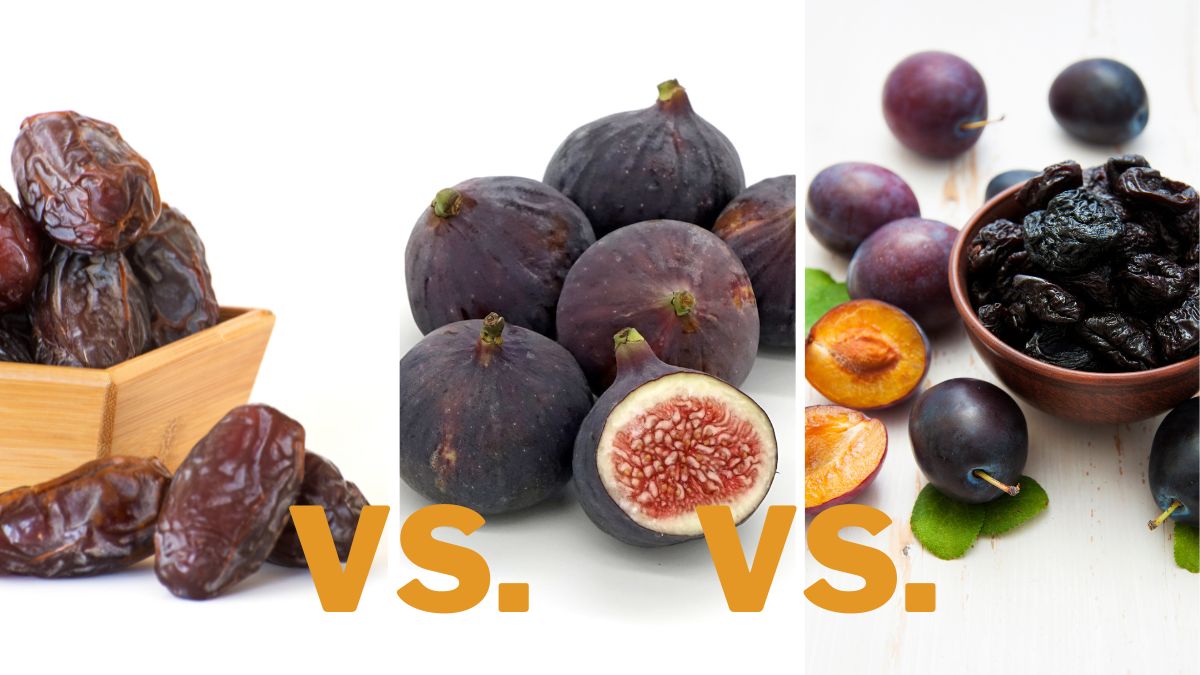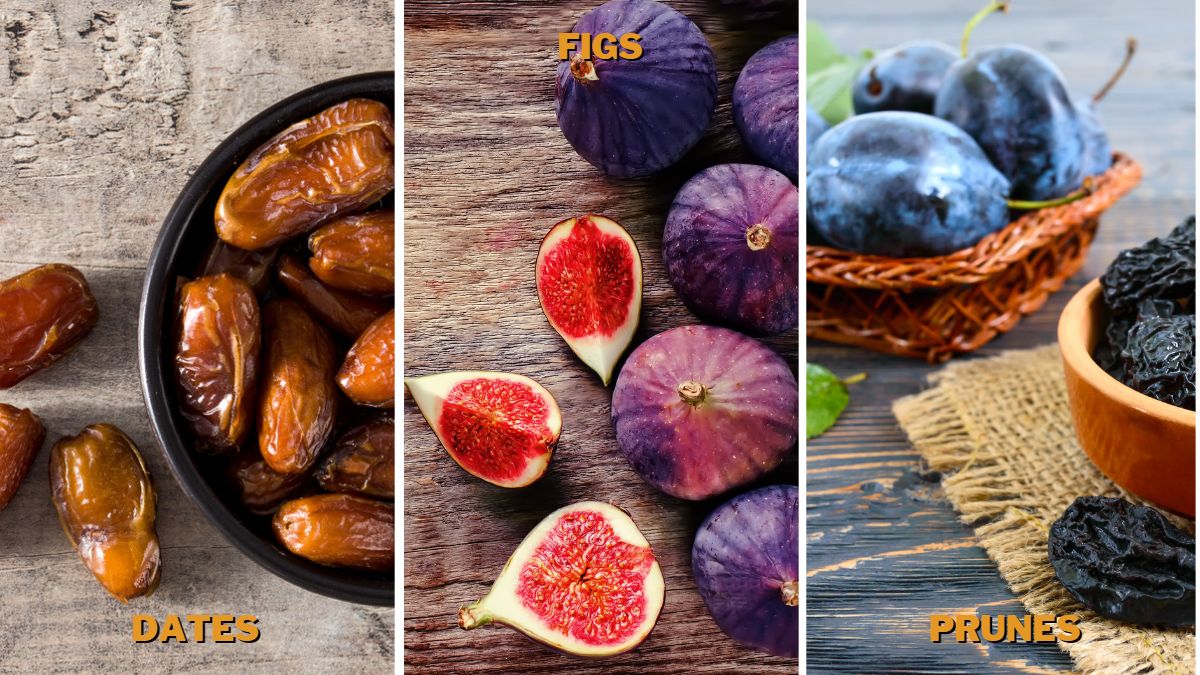Dates vs. Figs vs. Prunes: Differences

Popular worldwide, these three fruits have found a permanent place in many households. However, the three are entirely different fruits, offering different benefits and nutritional values. Due to their similar appearance, similar uses, and to some extent, similar flavors, dates, figs, and prunes are often mistaken for one another. So what are the differences between dates, figs, and prunes?
Dates are fruits from the date palm tree, figs are inverted flowers that need to be pollinated by fig wasps to survive, and prunes are dried plums. All three are seasonally limited fruits which is why they are found dried more often than fresh.
Prunes, figs, and dates all have their own features making them individual fruits, meaning that although they have similar uses, you cannot always substitute one for the other. Therefore, in the following paragraphs, I will thoroughly explain the differences between prunes, dates, and figs and give you some helpful information on how to use them.
Appearance and Origin
Prunes and dates are more similar than figs and figs dates. While prunes and dates are pitted fruits, figs aren’t, though they contain seeds, and prunes are dried plums that grow on plum trees.
Plum trees grow everywhere in the world. They don’t require any specific climate, but they do need sun. So, plum trees will grow and thrive if the weather is not cold all year round.
Dates are known as middle eastern fruits but are also found in north Africa. They grow from a date palm tree and are mainly dried, as they are very limited geographically and seasonally.
Both plums and dates appear similar, with very similar size, texture, and consistency. However, they do differ in color and shape. While dates are brown-red and slightly elongated, prunes are dark purple and wrinkly.
Figs are native to the Mediterranean but can thrive anywhere with enough warmth, sun, and water. While there are parts of the world where figs are a commodity, in other parts of the world, people have them in their yards.
Figs are interesting because they aren’t what you would traditionally consider fruit, but they are classified as inverted flowers. They don’t blossom outward but inward, and they need fig wasps to pollinate them.
Figs have a light brown color and are pear-shaped. The fig plant is more of a bush than a tree, but it is generally considered small.
All three trees, the fig, the date, and the prune (plum) trees, are very different from one another and can be easily distinguished.

Taste
Figs, prunes, and dates are all very delicious and expressively sweet. The prunes are the sweetest, but depending on the type, figs and dates can sometimes be sweeter than prunes.
Figs have a very specific flavor and are very particular. They taste sweet and slightly bitter. Since they are full of seeds inside, they are crunchy; however, the fruit itself is soft but slightly sticky.
Prunes are expressively sweet, slightly sour, and considerably sweeter than figs but not plums. They are sticky, but unlike figs, they aren’t crunchy but are very chewy.
Dates are also sweet with a slight caramel note. Of the three, dates are considered the richest in taste, and they are easiest to eat as they aren’t that sticky like the other two.
Nutrition
Regarding nutrition and health benefits, all three are very beneficial and healthy to eat. All three are excellent additions to your diet, and it is recommended that you have them three or four times a week.
Generally, prunes are the least caloric ones and are also the lowest in carbs and sugars. Dates and figs are richer in calories, carbs, and sugars, but that doesn’t mean that they are less healthy than prunes; they just do other things for other health-related aspects.
All three have dietary fiber and are very easy to digest. They are also great sources of vitamins that are excellent for immunity boosting.
Uses and Health Benefits
Prunes, dates, and figs are known as very beneficial and should be incorporated into your diet. [1] They can be used in different ways, from smoothies to having them as they are combined in meals.
Prunes and dates make excellent smoothie additions as they are excellent sugar substitutes, and they are also popular additions to healthy desserts and energy-boosting bars. Moreover, you can add them to sauces for roast meat and have them in the form of jams.
Figs don’t do that well in smoothies, as there will likely be chunks, but if you don’t mind them, feel free to throw them in your morning drink. However, figs are more popular to eat as they are combined with cheeses, deli meats, and wine.
Prunes are known as very effective in digestion problems. They are also excellent for skin health, as well as bone and muscle health. Prunes are an excellent ally in the fight against bad cholesterol and are very helpful if you have high blood pressure. [2]
Dates are rich in antioxidants, meaning they have an anti-inflammatory effect. They are excellent for gut health, as they are rich in fiber. [3] Dates are also excellent to use for sugar replacement, as they are sweet but not harmful.
They have also proven to be very efficient in blood sugar regulation and are very helpful for diabetes and insulin resistance. [4]
Figs kind of sum up the health benefits of prunes and dates. They are good for skin health, are used as an alternative medicine for constipation, help regulate blood sugar, are beneficial for cardiovascular health, and promote bone and muscle health as well. [5]
Figs, prunes, and dates are considered superfoods due to their nutritional properties and the health benefits they offer. They are also very easy to find and are very affordable, so you can easily add them to your diet.
The best thing about them is that you can use all three simultaneously, as they aren’t mutually exclusive, and none of them loses its benefits if used with the other two.
